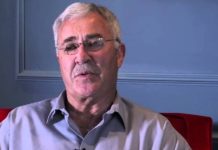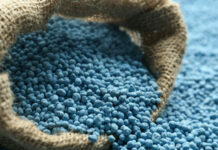
[miningmx.com] — MANAGEMENT changes at BHP Billiton and comments by CEO Marius Kloppers have fanned speculation the world’s biggest miner will try to sell less profitable assets to better exploit its crown jewels – iron ore, coal, copper, gas and potash.
Such a strategy would be similar to the one Anglo American embarked on in 2009 to sell its non-core assets in order to focus on its core mining portfolio and streamline the group’s management structure.
BHP’s diamond division in Canada tops the list of operations likely to be put up for sale following the firm’s announcement on November 30 it was reviewing its interests in the Ekati diamond mine and the Chidliak exploration projects in Canada.
BHP is spending billions of dollars to dig more iron ore and coal in Australia, drill for shale gas in the United States and build a world-class potash business from scratch in Canada.
Meanwhile, output from its of aluminium and nickel operations has been largely flat or negative over the past year.
Some media reported Kloppers had denied the two divisions are up for sale while another report said he would consider selling them. So far, none of the $80bn in BHP capital allocated up to 2015 to beef up its portfolio has been spent on either division.
The London Metal Exchange cash quote nickel price has dropped from nearly $30,000 a tonne earlier in the year to $18,000 currently. Aluminium has seen a similar decline, dropping as low as $1,975.50 a tonne from around $2,800.
Nickel and aluminium are both in oversupply and it could be years before the market rights itself, according to commodities analysts.
PORTFOLIO SET TO SHRINK
Deutsche Bank last week advised clients it expects BHP to review its nickel and aluminium businesses, similar to a review underway in diamonds and could also reassess its 50% share in its titanium dioxide joint venture in South Africa and its holdings in manganese.
Responsibility for BHP’s aluminium and stainless steel materials (nickel) divisions has been moved to the company’s chief operating officer, Alberto Calderon, to enable non-ferrous chief Andrew Mackenzie to better focus on development of the Olympic Dam copper project and the potash business.
“This will better enable Andrew to concentrate on the major growth projects within his businesses, which represent three of the key growth hubs for BHP Billiton,” BHP said in a statement emailed to Reuters.
Calderon’s title will change to group executive and chief executive, aluminium, nickel and corporate development once the reshuffle occurs.
“I think in 10 years time, the portfolio in terms of number of assets and in terms of number of products, will be smaller than it is today,” Kloppers was quoted as saying in Thursday’s edition of The Australian newspaper.
“Don’t take that as a signal that there is a deep desire to decrease the number of products today, but it is fair to say that as the scale of investment in shale gas, in iron ore, in coking coal, in Olympic Dam and potash grows, the minimum scale threshold for other businesses will change,” Kloppers said.
Macquarie Bank believes stainless steel materials represents only about 2% of the company’s net present value, the same as diamonds and half that of aluminium at 4%.
BHP in the last few years has sold off its nickel refining business in eastern Australia and its Ravensthorpe mining and processing operation in Western Australia.
The remaining nickel assets include a smelter and refinery, several mines scattered across the Kambalda and Mt. Keith nickel belts in Australia called Nickel West and its Cerro Matoso mining and smelting business in Colombia.
The aluminium assets are largely intact since BHP merged with Billiton in 2000.
However, Deutsche Bank believes the outcome of a potential sale of an estimated $8bn in aluminium-focused assets by close rival Rio Tinto could prompt BHP to also divest.
In contrast, BHP plans to spend around $4.5bn on developing shale gas in 2012 after spending nearly $17bn buying shale gas producer Petrohawk Energy and shale gas assets from Chesapeake Energy earlier this year.









